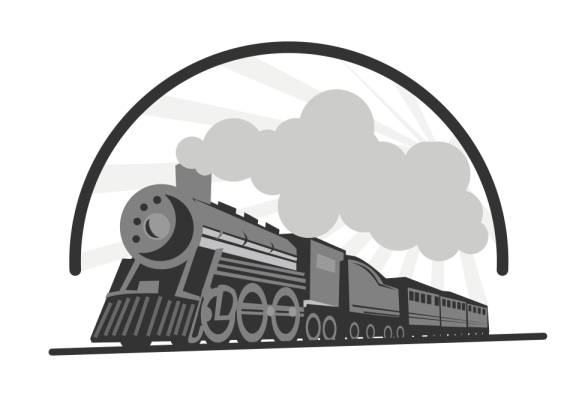
The Fallen Flags Junction is a conceptual project that features railroads no longer in operation, but modeling innovation that is all new. This combination of elements makes for a unique and fun opportunity to create an N Scale model railroad that can become a template for others interested in this special hobby.
My own involvement in the hobby has been on and off for most of my life, as it is for many modelers. I was an active modeler as a boy, then stopped while making my way into adulthood, then started up again about twenty years ago, then stopped for a few years due to work requirements. Finally (or hopefully not finally), I got serious about modeling again several years ago, taking a partially completed track plan and turning it into a polished model, the South Great Western II. The original South Great Western Railroad was built when I was 11 years old. I still have fond memories of that 4 x 8 foot HO scale layout.
The South Great Western II was recently completed – a combined N and Nn3 dual gauge layout (see the August 2020 issue of N Scale Magazine) that was a blast to build. I relied on all of my past experience in model building, and set about creating an early 1950s layout in the southwest and had no specific location, rail service or any other “real life” requirements. It was fun, and I enjoyed every minute of it.
Once completed, however, I decided I wanted to do something more elaborate. I dismantled the dual gauge South Great Western II railroad and began thinking about what to do next. I started reading different books and magazines, searching for the spark that would ignite a new project plan.
One evening, while talking with my wife Cameron, she asked me about my interest in trains, and if I remembered anything from my youth about why I liked them. I shared some stories (some of which will be shared in various blog posts and/or YouTube videos), and the result was the concept of this project: The Fallen Flags Junction.
The idea of combining real world memories with history, real places, and the needs related to rail transportation was something that I hadn’t really thought about before. So, I determined that there would have to be a series of new objectives for the Fallen Flags Junction. Most importantly, that it feature railroad companies no longer in existence.
I want this new project to be both challenging and fun. With that in mind, I set one important overall goal: that as much of the project as possible be built using techniques, materials, and objectives that are all new to me.
Even though I’ve built many railroad layouts during my lifetime, many of today’s technologies in model railroading haven’t been used by me – I used traditional methods of modeling. DCC isn’t all that new, and in fact, it’s pretty advanced – but I’ve never built a DCC layout before. Kato Unitrack is also new to me, and in my earlier days, I would have ignored it, preferring to work with Code 55 or Code 83 scale track that I’d install tie by tie. Today, however, working with the Kato system is new, so it falls into the right list of objectives.

I’ve never built a point to point railroad before, either. There are a number of reasons why this is now very interesting. Having one railroad make up a train in location A, then transporting it to location B via a second railroad, and handing it over to a third at that destination sounds pretty compelling. While the details are more complicated than my explanation, I’m sure you get the idea.
Establishing a very specific time period is also new. I selected the 1970 – 1972 period as the timeframe. The Burlington Northern was formed in 1970, absorbing multiple other railroads. It makes for an interesting collection of motive power, including new BN locomotives, older Great Northern, Northern Pacific, and Chicago, Quincy, and Burlington equipment. These locomotives will be found in the BN yard in the Portland area of Oregon.
In Southern California, blue bonnet and tiger striped Santa Fe equipment can be found moving freight around in LA’s Hobart Yard as part of the Santa Fe Fullerton Line. Although small (Santa Fe’s major rail yards were in San Bernardino and further east), it was via Hobart just east of the L.A. River that the Santa Fe connected with the Southern Pacific.
The Southern Pacific Railroad – the road I have modeled for most of my life – connected Los Angeles to Portland. Even today, the Union Pacific, which absorbed the SP in 1996 connects L.A. to Portland. The route includes some of the interesting landscapes found in California and southern Oregon, and is one that is demanding on trains as well, with steep grades, tunnels, and tight radius curves.
The Southern Pacific has had a storied history, and for anyone living on the West Coast, between L.A., and Chicago, or in the Pacific Southwest through to Texas, the SP and its Cotton Belt subsidiary was a common sight.
And so, the journey begins. You’re invited to come along, to see how the project develops, to share with the successes and the challenges, and to perhaps get some ideas for your own model railroad, too.
Visit the YouTube channel to get the latest updates, modeling techniques, and fun history that make up the Fallen Flags Junction project.

